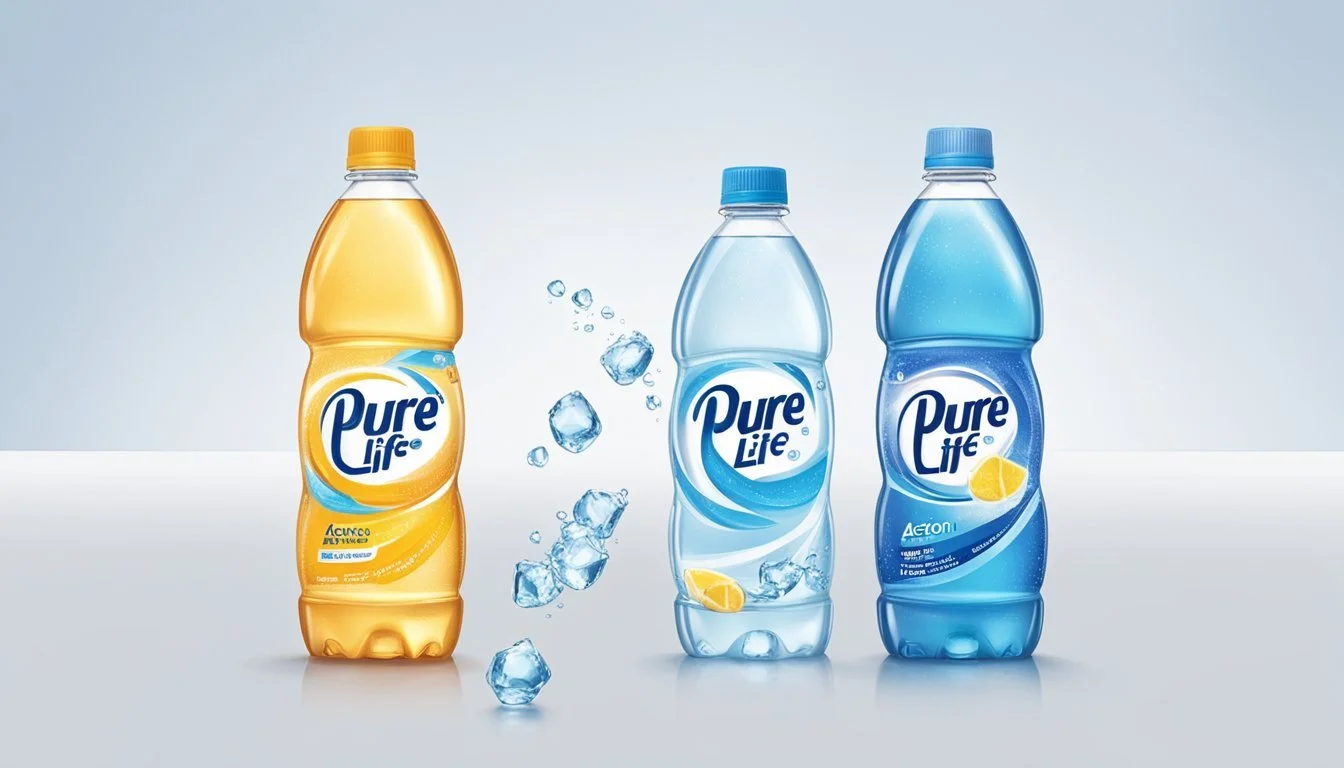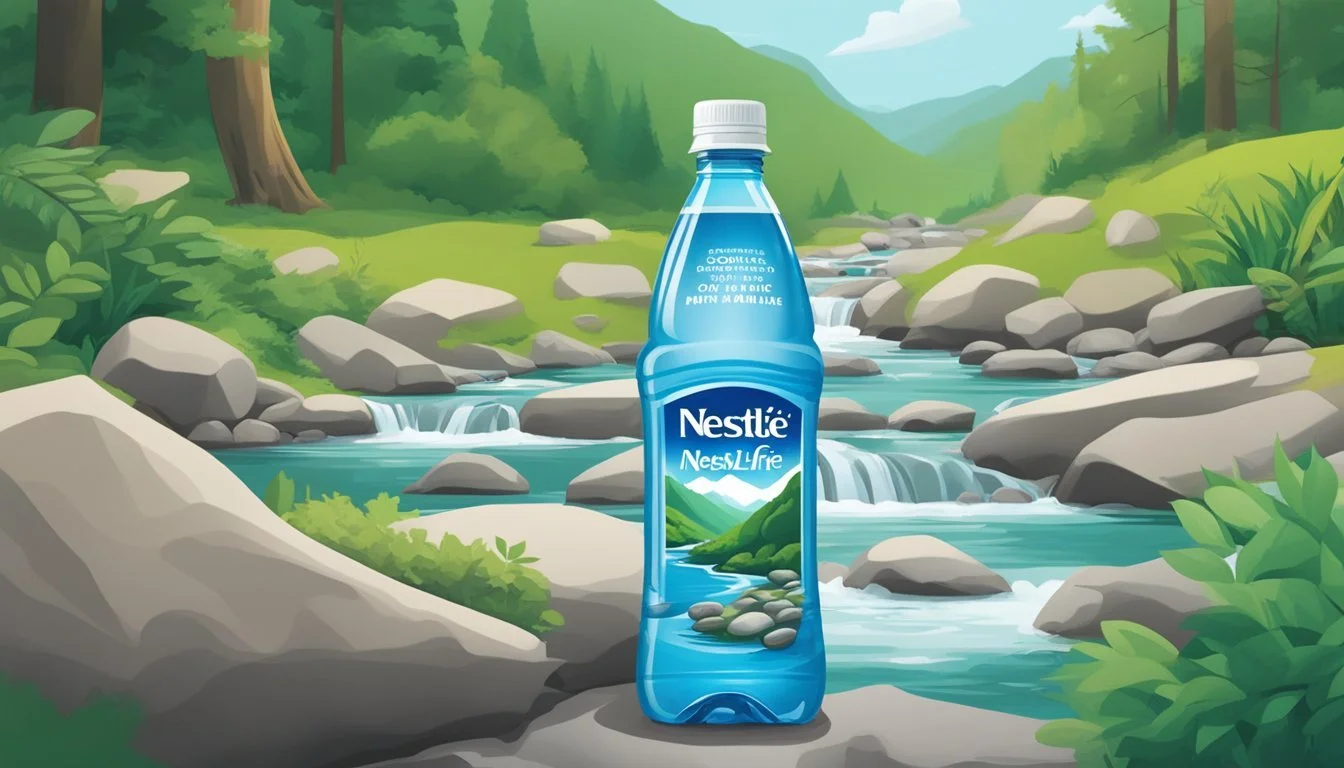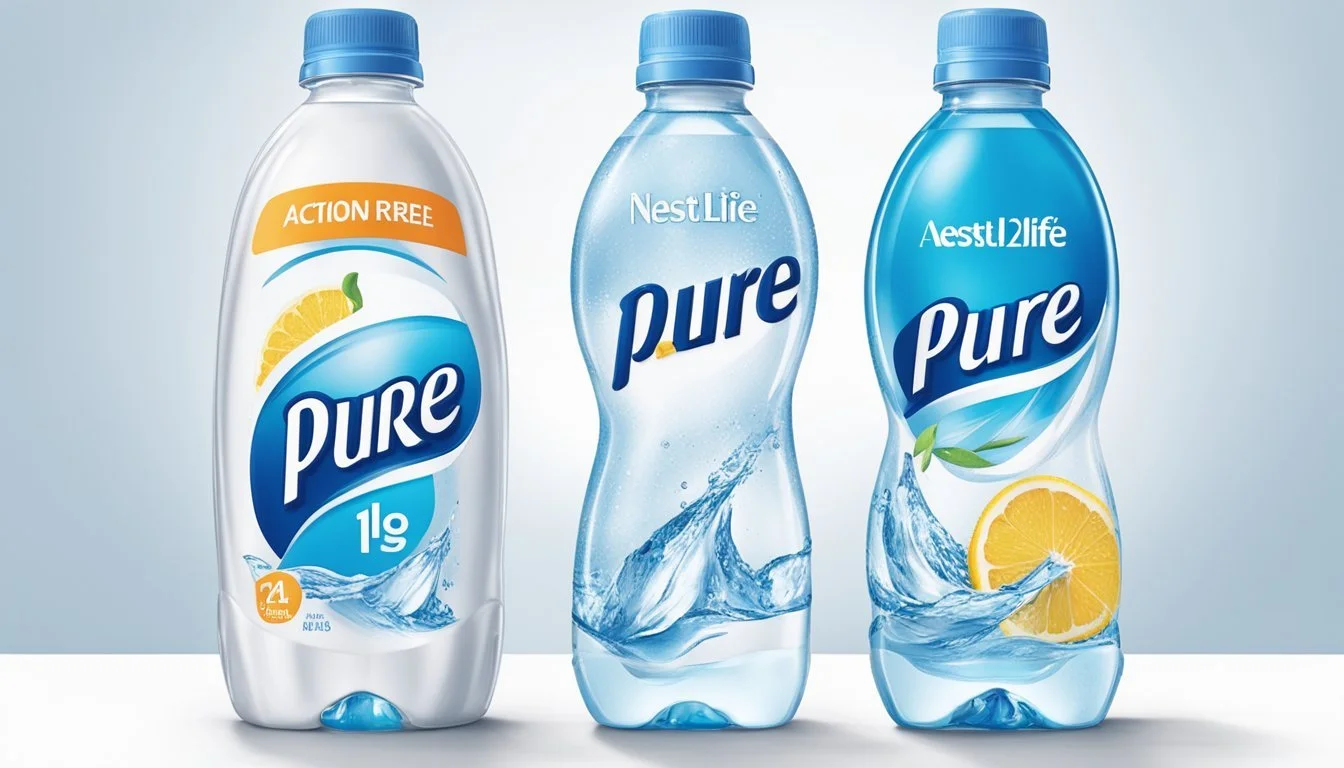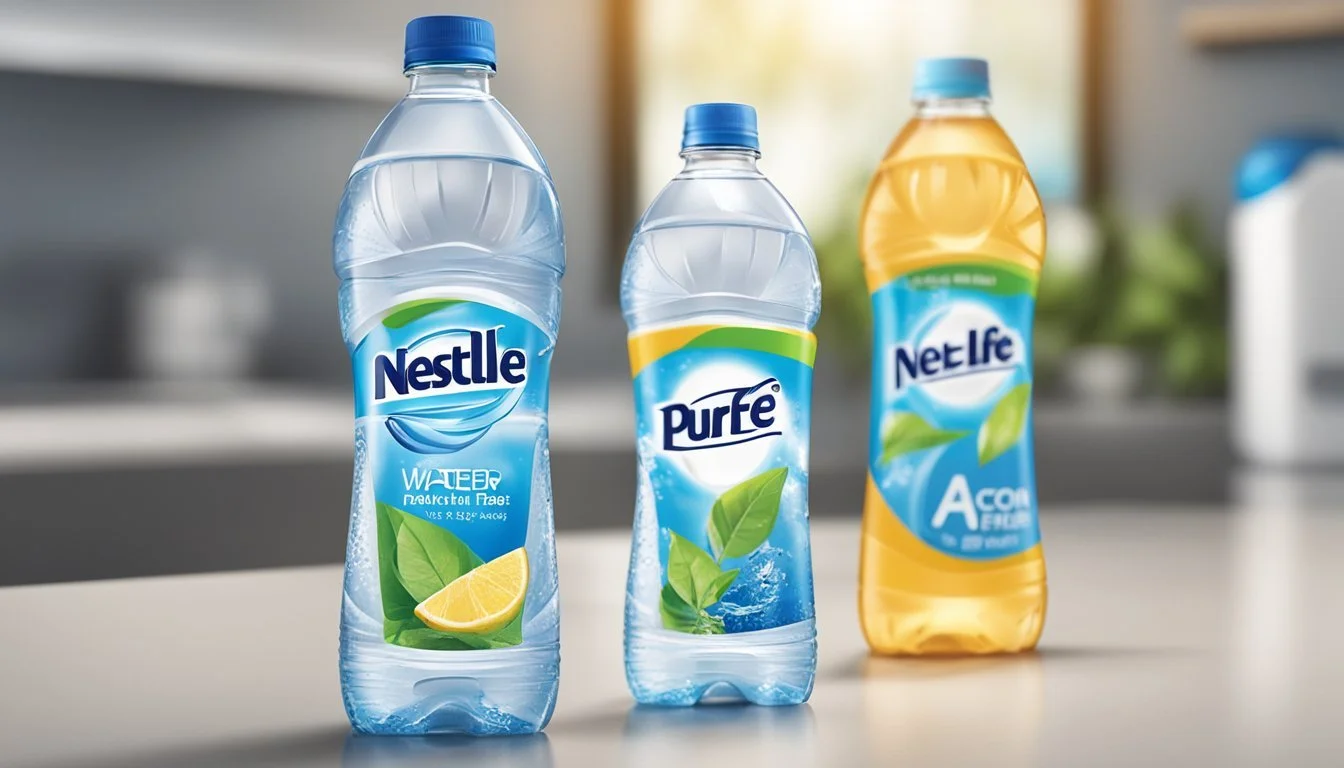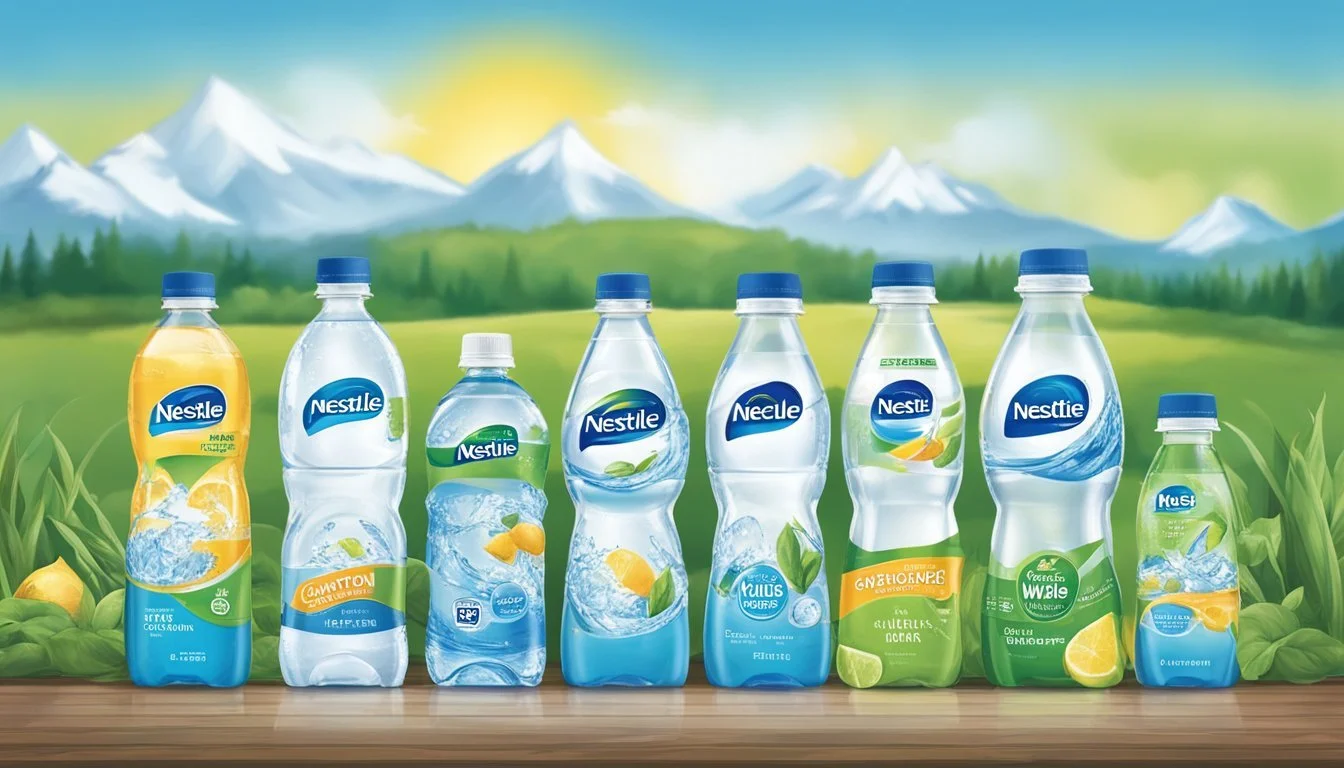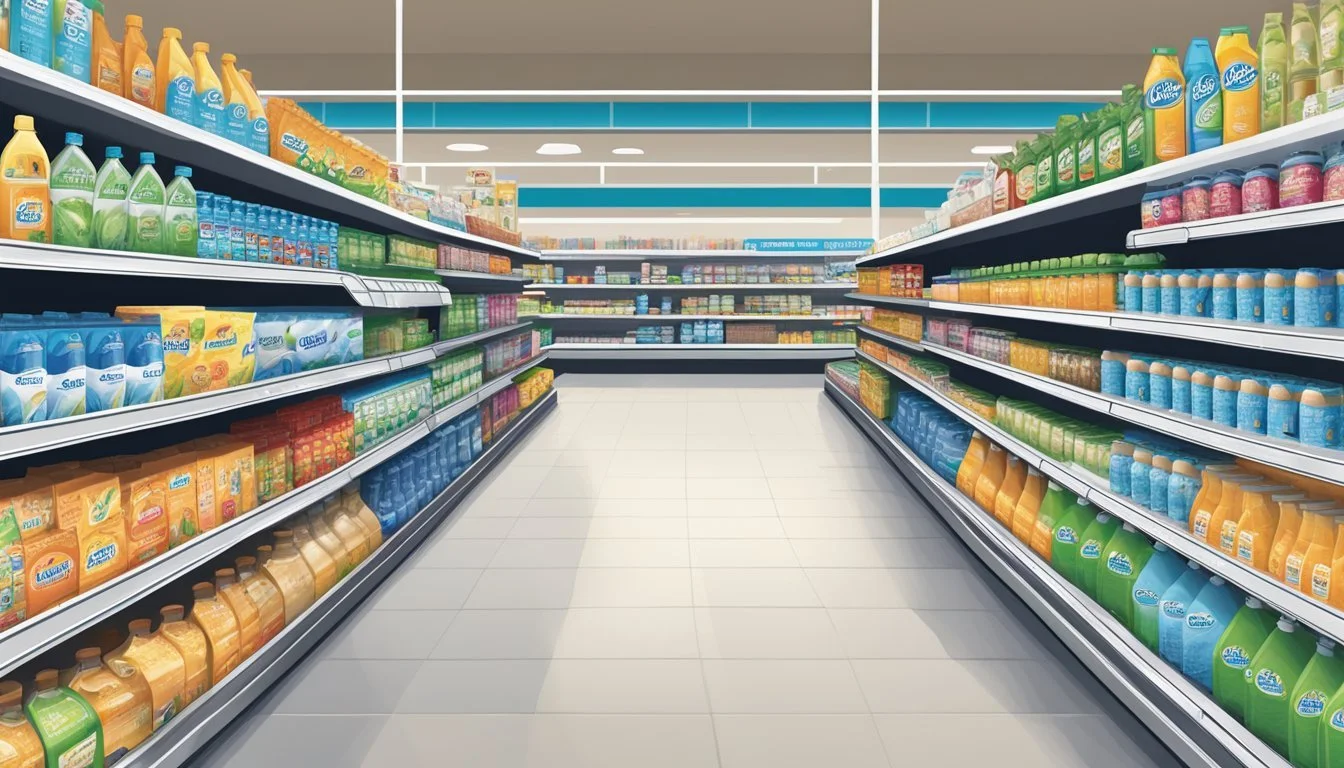Nestlé Pure Life vs. Action
Bottled Water Showdown
Nestlé Pure Life and Action are two prominent bottled water brands vying for consumer attention. While Nestlé Pure Life is known for its global presence and purified water product, Action has carved out its niche with a focus on taste and quality. Each brand uses different sourcing and filtration methods which contribute to the unique characteristics of their water.
When comparing taste, many consumers find that Action's crisp, refreshing flavor stands out more compared to Nestlé Pure Life. In terms of quality, Nestlé Pure Life emphasizes purity with a multi-step filtration process, whereas Action prides itself on a more natural spring water approach. These factors make each brand suitable for different preferences and priorities.
As readers continue through this article, they will gain a clearer understanding of how each brand positions itself in the competitive bottled water market. The insights provided will help you make an informed decision about which bottled water better suits your needs.
The Importance of Hydration and Bottled Water
Hydration is essential for maintaining good health. Water plays a vital role in bodily functions, impacting everything from digestion to temperature regulation.
Bottled water provides a convenient and reliable way to ensure adequate water intake. This is particularly important for people living in areas without safe and clean tap water.
Health benefits of staying hydrated include improved cognitive function, better physical performance, and maintaining a healthy weight. Proper hydration helps in regulating body temperature and flushing out toxins.
Many individuals choose bottled water for its perceived purity and taste. Brands like Nestlé Pure Life offer a consistent quality that some consumers prefer over tap water.
Bold Claims: Some bottled water brands, such as Nestlé Pure Life, are known for their large-scale production and stringent quality controls. This guarantees the availability of clean water.
In addition to basic hydration, some bottled waters, like Core Hydration, enhance their products with electrolytes and minerals, which can aid in maintaining optimal body pH levels.
While the convenience of bottled water is undeniable, it's also crucial to be aware of the environmental impact. Purchasing reusable water bottles and refilling them with purified water can be a more sustainable choice.
Proper hydration is non-negotiable for overall health and well-being. Bottled water serves as an accessible and, in many cases, a necessary option to help individuals meet their daily hydration needs.
Nestlé Pure Life: Brand Overview
Nestlé Pure Life is a well-known brand in the bottled water industry. It is managed by Nestlé, a major player in the global food and beverage market.
The brand is recognized for its commitment to providing high-quality hydration options. Nestlé Pure Life sources its water from multiple locations, ensuring a consistent and trusted product.
A key highlight of Nestlé Pure Life is its rigorous purification process. This process includes multiple stages of filtration to remove impurities and maintain water quality. These standards make the water safe and pleasant to drink.
Nestlé Pure Life often includes added minerals to enhance taste. These minerals contribute to a neutral and balanced flavor, making it a popular choice among consumers.
The brand is marketed in various packaging sizes, from small personal bottles to large multi-packs. This variety offers convenience for different needs and occasions.
Nestlé Pure Life has a global presence, available in many countries, making it easily accessible. This broad availability has helped it become a household name in many regions.
The affordability of Nestlé Pure Life also appeals to cost-conscious consumers who want quality hydration without breaking the bank. The brand's competitive pricing strategies have played a significant role in its widespread market acceptance.
Key Points
Purification Process: Stringent filtration stages.
Added Minerals: Enhance taste.
Packaging Options: Varied sizes for convenience.
Global Presence: Widely available.
Affordability: Budget-friendly pricing.
Assessing Water Quality and Safety
When evaluating bottled water, it is crucial to consider the methods used for purification, adherence to safety standards, and the presence of any contaminants.
Purification Process and Qualitative Differences
Nestlé Pure Life utilizes a multi-step purification process. Key steps include reverse osmosis and ozonation, which help remove impurities.
This process ensures the water is clean and free from contaminants.
Action, on the other hand, uses a meticulous filtration system to achieve similar results.
Their approach often involves carbon filtering and UV light treatment. Despite differences in methodology, both brands aim to deliver high-quality, purified water to consumers.
Standards and Certifications
Nestlé Pure Life adheres to numerous safety standards and certifications. The brand complies with regulations set by the FDA and EPA, ensuring each bottle meets stringent quality guidelines.
Additionally, their facilities have received certifications from entities like the NSF International.
Action also maintains rigorous standards, aligning with both national and international regulations. Certifications from the International Bottled Water Association (IBWA) further attest to their commitment to quality and safety.
Lead, Arsenic, and Contaminants Concern
Lead contamination is a critical concern for bottled water manufacturers. Nestlé Pure Life guarantees lead levels well below the FDA's stringent limits.
Studies show their water is regularly tested for heavy metals, including arsenic.
Action also prioritizes safety, conducting frequent tests for contaminants like lead and arsenic. By adhering to stricter standards, both brands aim to mitigate any health risks associated with heavy metals and other potential contaminants.
Through diligent testing and compliance with regulations, Nestlé Pure Life and Action ensure their water remains safe for consumers.
Taste Profile Comparison
Nestlé Pure Life and Action bottled waters offer distinct taste experiences due to differences in mineral content and consumer preferences. These differences are crucial in determining which water suits individual palates better.
Mineral Content and pH Levels
Mineral content significantly impacts the taste of bottled water. Nestlé Pure Life is known for its purified water, resulting in a neutral taste. The purification process strips the water of most minerals and impurities, leading to a balanced flavor profile free of any strong aftertastes.
Action, on the other hand, often emphasizes natural mineral composition. The presence of electrolytes and minerals such as calcium and magnesium can impart a slight mineral taste, enhancing the water's profile. Consumers sensitive to taste may notice these subtle differences more distinctly in Action water.
pH levels also play a role in taste. With Nestlé Pure Life typically falling within a neutral pH range (around 7), the water maintains a straightforward and unaltered flavor. Action's pH level can vary slightly depending on its source, potentially leaning towards a slightly alkaline or acidic range, which may affect the overall mouthfeel and taste.
Consumer Taste Preferences
Consumer preferences are highly subjective when it comes to bottled water. Taste tests often reveal that some people prefer the clean, neutral taste of Nestlé Pure Life, which lacks any pronounced mineral flavor. This makes it a popular choice for those who favor a no-nonsense approach to hydration.
Others might prefer Action for its distinct character. The subtle presence of minerals can give the water a refreshing taste that some find more satisfying. This can be particularly appealing to individuals who enjoy the slight natural flavor that minerals contribute.
Multiple taste tests and surveys indicate that while the preference can be split, the key takeaway is the individual's palate and sensitivity to the subtle variations in water composition. Thus, choosing between Nestlé Pure Life and Action often comes down to personal taste and hydration needs.
Environmental Considerations
When comparing Nestlé Pure Life to other bottled water brands, it is crucial to examine the environmental implications arising from packaging choices, sustainability practices, and recycling efforts. A focused assessment of these factors reveals the broader impacts of bottled water consumption on the planet.
Packaging and Plastic Waste
Nestlé Pure Life uses plastic bottles, which contribute significantly to global plastic waste. This form of packaging, though lightweight and durable, often ends up in landfills or the ocean. Plastics take hundreds of years to decompose, causing long-lasting environmental harm.
Some alternatives to plastic bottles include boxed water and glass bottles. These options are often more eco-friendly as they are either biodegradable or more easily recyclable. However, the logistical complexities and costs associated with these alternatives can be a limiting factor.
Sustainability and Environmental Footprint
Nestlé Pure Life has initiated various sustainability programs aimed at reducing its environmental footprint. These include efforts to source water sustainably and manage the impact on local ecosystems. Sustainable sourcing ensures that water extraction does not deplete resources, maintaining ecological balance.
In contrast, brands focusing on eco-friendly packaging, like Boxed Water, highlight their minimalistic designs and recyclable materials. These brands cater to environmentally conscious consumers by reducing carbon emissions and avoiding plastic use altogether.
Recycling Efforts and Eco-Friendly Initiatives
Nestlé Pure Life has invested in recycling programs to mitigate the environmental impact of their plastic bottles. The company has set targets to increase the use of recycled materials in their packaging, aiming for more than 50% recycled plastic content in their bottles.
Additionally, Nestlé has partnered with various organizations to enhance public recycling infrastructure and awareness. These initiatives are designed to encourage consumers to recycle more, reducing the amount of plastic waste that ends up in natural environments.
Eco-friendly initiatives from other brands include using biodegradable packaging and promoting water conservation. These actions resonate with consumers who prioritize environmental responsibility and seek to minimize their ecological footprint.
Health and Added Benefits
When comparing Nestlé Pure Life to Action bottled water, two critical factors to consider are the presence and balance of electrolytes and minerals, and the overall health benefits that hydration brings.
Electrolytes and Mineral Additions
Both bottles of water offer various electrolytes and mineral compositions aimed at enhancing health and taste.
Nestlé Pure Life undergoes a multi-step filtration process that includes reverse osmosis. It's enhanced with a light blend of minerals, which is intended to provide a distinctive, refreshing taste.
Action bottled water often highlights a balance of naturally occurring minerals. These include calcium, magnesium, and potassium, all of which are essential for bodily functions. This natural mineral presence can contribute to improved taste and slight alkalinity, offering potential benefits for the body's acid-base balance.
Health Benefits of Hydration
Adequate hydration is crucial for maintaining overall health and wellbeing.
Drinking sufficient water, whether it's Nestlé Pure Life or Action, supports crucial bodily functions. Proper hydration helps in digestion, nutrient absorption, temperature regulation, and maintaining skin health.
Nestlé Pure Life emphasizes its stringent purification process, ensuring a clean and safe drinking experience. This reduces the risk of waterborne diseases and contaminants, contributing to overall health.
Action water prides itself on being sourced from natural springs, providing a refreshing hydration source, free from synthetic additives. By maintaining natural minerals, it may also support metabolic processes and muscle function, particularly those involving electrolyte balance.
Both Nestlé Pure Life and Action aim to offer health-conscious hydration solutions, highlighting the important role of electrolytes and the overarching benefits of staying well-hydrated.
Source and Origin
Nestlé Pure Life and Action bottled water differ significantly in their sources and origin, impacting their taste, quality, and overall content.
Natural Spring vs. Purified: Sourcing Differences
Nestlé Pure Life sources its water primarily from municipal supplies. This water undergoes rigorous purification processes, including filtration and reverse osmosis. The result is purified water that removes impurities and meets high safety standards.
Action water, on the other hand, often comes from natural springs. These sources are naturally occurring and are typically located in pristine environments. The water is collected directly at the spring, which helps maintain its mineral content and natural flavor.
Consumers looking for water sourced from natural springs may prefer Action for its authentic spring water taste. Meanwhile, those who prioritize safety and extensive purification might choose Nestlé Pure Life.
Variations in Bottled Water Brands
The bottled water market features a diverse range of brands, each offering distinctive qualities and appealing to different consumer preferences. Key differences often involve sourcing, processing techniques, and taste profiles.
Comparison of Key Players in the Market
Major brands like Nestlé Pure Life, Poland Spring, and Dasani dominate the bottled water industry. Nestlé Pure Life focuses on consistency and purity through a multi-step filtration process. Poland Spring boasts natural spring water, noted for its crisp taste derived from its source. Dasani, produced by Coca-Cola, infuses its water with minerals for a distinctive flavor.
Fiji Natural Artesian Water and Voss cater to premium market segments. Fiji boasts water from a remote artesian aquifer, offering a smooth taste. Voss sources its water from Norway, highlighting its clean and fresh profile. Evian and San Pellegrino emphasize their heritage and natural mineral contents, appealing to health-conscious consumers.
Other notable brands include Aquafina, Core Hydration, and Smartwater, which utilize various purification methods to achieve their desired taste and quality.
Brand Source Key Feature Nestlé Pure Life Purified water Consistent taste Poland Spring Spring water Crisp and natural taste Dasani Municipal sources Mineral-infused for distinct flavor Fiji Artesian Aquifer Smooth, premium taste Voss Norway Clean and fresh profile
Consumer Insights and Market Trends
Consumer preferences show a growing inclination towards bottled water brands with clear sourcing and health benefits. Brands such as Life WTR and Flow capitalize on the trend by marketing alkaline and pH-balanced waters. Boxed Water and Eternal Water appeal to environmentally conscious consumers with sustainable packaging and eco-friendly practices.
Market trends indicate a rising demand for premium waters like Icelandic Glacial and Mountain Valley Spring Water, emphasizing unique mineral compositions and pristine sources. Aquafina and Smartwater remain popular for their consistent availability and affordability.
Consumer insights reveal that taste, health benefits, and environmental impact are crucial factors influencing choices. Brand loyalty is often driven by perceived quality and corporate transparency. Emerging brands seek to differentiate themselves through innovative packaging and commitment to sustainability.
By understanding these variations and consumer preferences, one can better appreciate the complexities of the bottled water market.
Accessibility and Convenience
Nestlé Pure Life and Action bottled water have distinct advantages when it comes to accessibility and convenience. Their availability in stores and diverse purchasing options cater to a wide range of consumer needs.
Availability in Grocery Stores and Retail Outlets
Nestlé Pure Life is widely available in major grocery stores and retail outlets across the country. This extensive distribution ensures that consumers can easily find and purchase it during their regular shopping trips.
Whether in large supermarkets or smaller neighborhood stores, Nestlé makes its way to customers efficiently.
Action bottled water also boasts a broad presence but is more regionally focused. While it may not have the same nationwide penetration as Nestlé Pure Life, it remains accessible in key areas.
Consumers in regions where Action water is sold can enjoy its convenience in local stores.
Home Delivery and Online Purchase Options
Nestlé Pure Life offers robust online purchase options through major e-commerce platforms like Amazon and Walmart. This allows customers to buy in bulk or set up recurring deliveries, making it incredibly convenient for busy households.
Additionally, Nestlé provides home delivery services, streamlining the process of getting fresh water to your door.
Action bottled water is also available online, though it may be limited to specific regions. Depending on the area, customers can order Action water from the brand’s own website or local delivery services.
This ensures that those who prefer Action can still enjoy the convenience of home delivery where available.
Regulatory and Industry Standards
The bottled water industry is governed by stringent regulatory and industry standards that ensure product safety and quality. These standards address everything from water sourcing and purity testing to packaging and consumer transparency.
International Bottled Water Association
The International Bottled Water Association (IBWA) plays a crucial role in setting industry standards. It requires member companies to meet not only federal regulations but also additional stringent guidelines. Members must adhere to the IBWA Bottled Water Code of Practice, which dictates specific quality benchmarks and operational procedures.
Certification: Companies undergo annual, unannounced plant inspections by third-party organizations sanctioned by the IBWA.
Quality Reports: These reports often include detailed records of water source, filtration methods, and contamination testing, ensuring transparency and trust.
Consumer Confidence: IBWA membership signals a commitment to maintaining high quality and safety standards, providing consumers with assurance in their choice of bottled water.
BPA Regulations and Safety
Bisphenol A (BPA) is a chemical found in some plastics and has raised health concerns. In the bottled water industry, the use of BPA is highly regulated to ensure consumer safety.
Safety Standards: The Food and Drug Administration (FDA) has determined that BPA is safe at current levels found in foods and beverages, including bottled water containers.
Alternative Materials: Many bottled water companies, including Nestlé Pure Life and Action, have switched to BPA-free packaging to address consumer concerns and enhance safety.
Labeling: Products are often clearly labeled as BPA-free, enhancing transparency and helping consumers make informed choices.
Environmental Impact: By adopting BPA-free plastics, companies also contribute to broader environmental protection efforts, as these materials are often more recyclable and less harmful to the planet.
These regulations and standards ensure that consumers receive safe, high-quality bottled water, while also promoting industry best practices.
Transparency and Consumer Education
Nestlé Pure Life competes against Action by emphasizing transparency in quality reporting and engaging educational initiatives to help consumers make informed decisions. These efforts vary in their strategies and effectiveness.
Providing Access to Quality Reports
Nestlé Pure Life offers multiple-stage filtration and quality checks to ensure the purity of their bottled water. They maintain transparency by providing detailed quality reports accessible to the public. These reports include information on the source, treatment methods, and results of purity tests.
Transparency in sharing these reports helps families understand the origins and safety of the water they consume. This commitment to quality reporting also assures partners and customers about the product's reliability and safety standards.
Educational Initiatives for Informed Choices
Beyond reporting, Nestlé Pure Life engages in educational initiatives to empower consumers with knowledge. They provide resources that explain the importance of water quality, proper hydration, and environmental impacts. These initiatives often include online informational materials, school programs, and community workshops.
Such educational efforts aim to guide families in making healthier choices regarding bottled water. By enhancing consumer education, Nestlé Pure Life ensures that customers are not only aware of the product's safety but also its broader implications on health and the environment.
More About Nestle Pure Life
Acqua Panna vs Nestle Pure Life: Which Bottled Water is Better?
Aquafina vs Nestle Pure Life: Which Bottled Water is Better?
Arrowhead vs Nestle Pure Life: Which Bottled Water is Better?
Boxed Water vs Nestle Pure Life: Which Bottled Water is Better?
Core Hydration vs Nestle Pure Life: Which Bottled Water is Better?
Deer Park vs Nestle Pure Life: Which Bottled Water is Better?
Essentia vs Nestle Pure Life: Which Bottled Water is Better?
Ice Mountain vs Nestle Pure Life: Which Bottled Water is Better?
Icelandic Glacial vs Nestle Pure Life: Which Bottled Water is Better?
Just Water vs Nestle Pure Life: Which Bottled Water is Better?
Mountain Valley Spring Water vs Nestle Pure Life: Which Bottled Water is Better?
Nestle Pure Life vs 1907water: Which Bottled Water is Better?
Nestle Pure Life vs 7-Select: Which Bottled Water is Better?
Nestle Pure Life vs Alkaline88: Which Bottled Water is Better?
Nestle Pure Life vs Antipodes: Which Bottled Water is Better?
Nestle Pure Life vs Aqua Carpatica: Which Bottled Water is Better?
Nestle Pure Life vs Big Chill: Which Bottled Water is Better?
Nestle Pure Life vs BodyArmor: Which Bottled Water is Better?
Nestle Pure Life vs Cascade Mountain: Which Bottled Water is Better?
Nestle Pure Life vs Castle Rock: Which Bottled Water is Better?
Nestle Pure Life vs CBD Living: Which Bottled Water is Better?
Nestle Pure Life vs Crystal Geyser: Which Bottled Water is Better?
Nestle Pure Life vs Crystal Lake: Which Bottled Water is Better?
Nestle Pure Life vs Essence pH10: Which Bottled Water is Better?
Nestle Pure Life vs Hawaii Volcanic: Which Bottled Water is Better?
Nestle Pure Life vs Hawaiian Springs: Which Bottled Water is Better?
Nestle Pure Life vs Kirkland Signature: Which Bottled Water is Better?
Nestle Pure Life vs Liquid Death: Which Bottled Water is Better?
Nestle Pure Life vs Mananalu: Which Bottled Water is Better?
Nestle Pure Life vs Open Water: Which Bottled Water is Better?
Nestle Pure Life vs Poland Spring: Which Bottled Water is Better?
Nestle Pure Life vs Proud Source: Which Bottled Water is Better?
Nestle Pure Life vs Pure Life: Which Bottled Water is Better?
Nestle Pure Life vs Purely Sedona: Which Bottled Water is Better?
Nestle Pure Life vs Refreshe: Which Bottled Water is Better?
Nestle Pure Life vs Richard's Rainwater: Which Bottled Water is Better?
Nestle Pure Life vs San Pellegrino: Which Bottled Water is Better?
Nestle Pure Life vs Simple Truth: Which Bottled Water is Better?
Nestle Pure Life vs Smartwater: Which Bottled Water is Better?
Nestle Pure Life vs Solan de Cabras: Which Bottled Water is Better?
Nestle Pure Life vs Talking Rain AQA: Which Bottled Water is Better?
Nestle Pure Life vs The Well: Which Bottled Water is Better?
Nestle Pure Life vs Topo Chico: Which Bottled Water is Better?
Nestle Pure Life vs Tru Alka: Which Bottled Water is Better?
Nestle Pure Life vs Weird Water: Which Bottled Water is Better?
Nestle Pure Life vs Whole Foods 365: Which Bottled Water is Better?
Nestle Pure Life vs Whole Foods Italian Still Mineral water: Which Bottled Water is Better?
Nestle Pure Life vs Zephyrhills: Which Bottled Water is Better?

